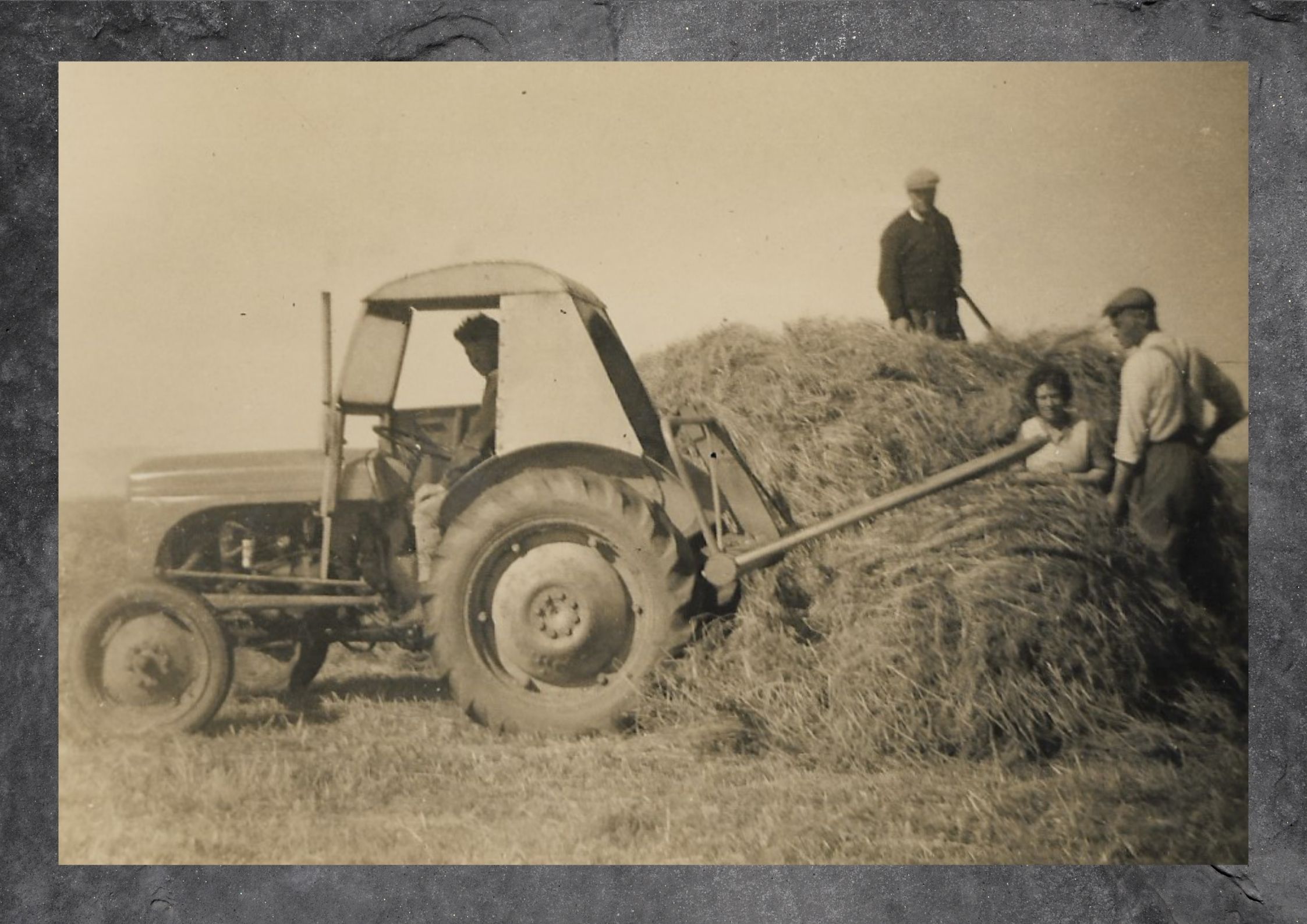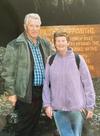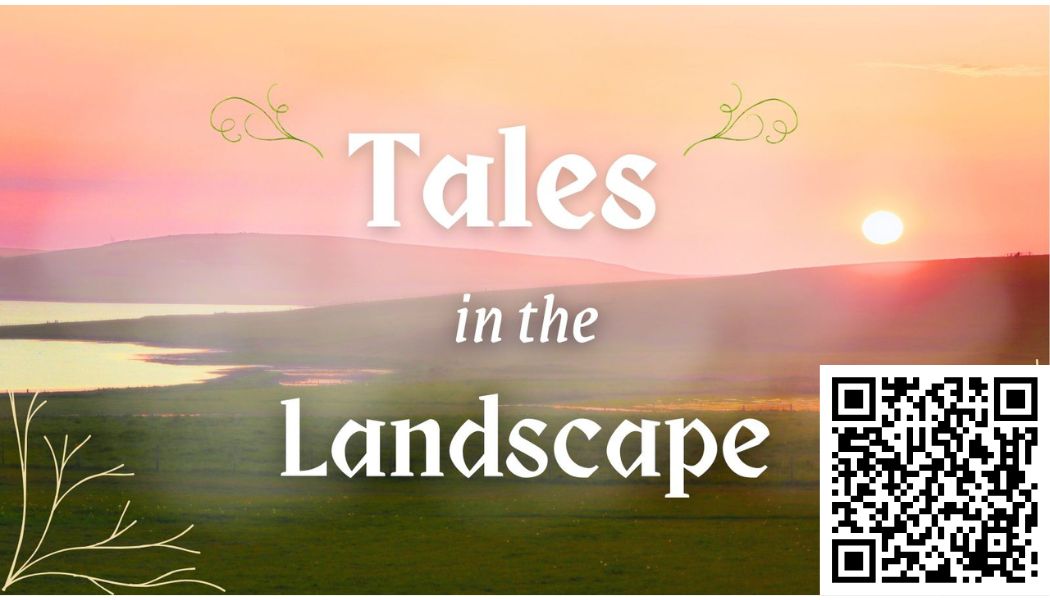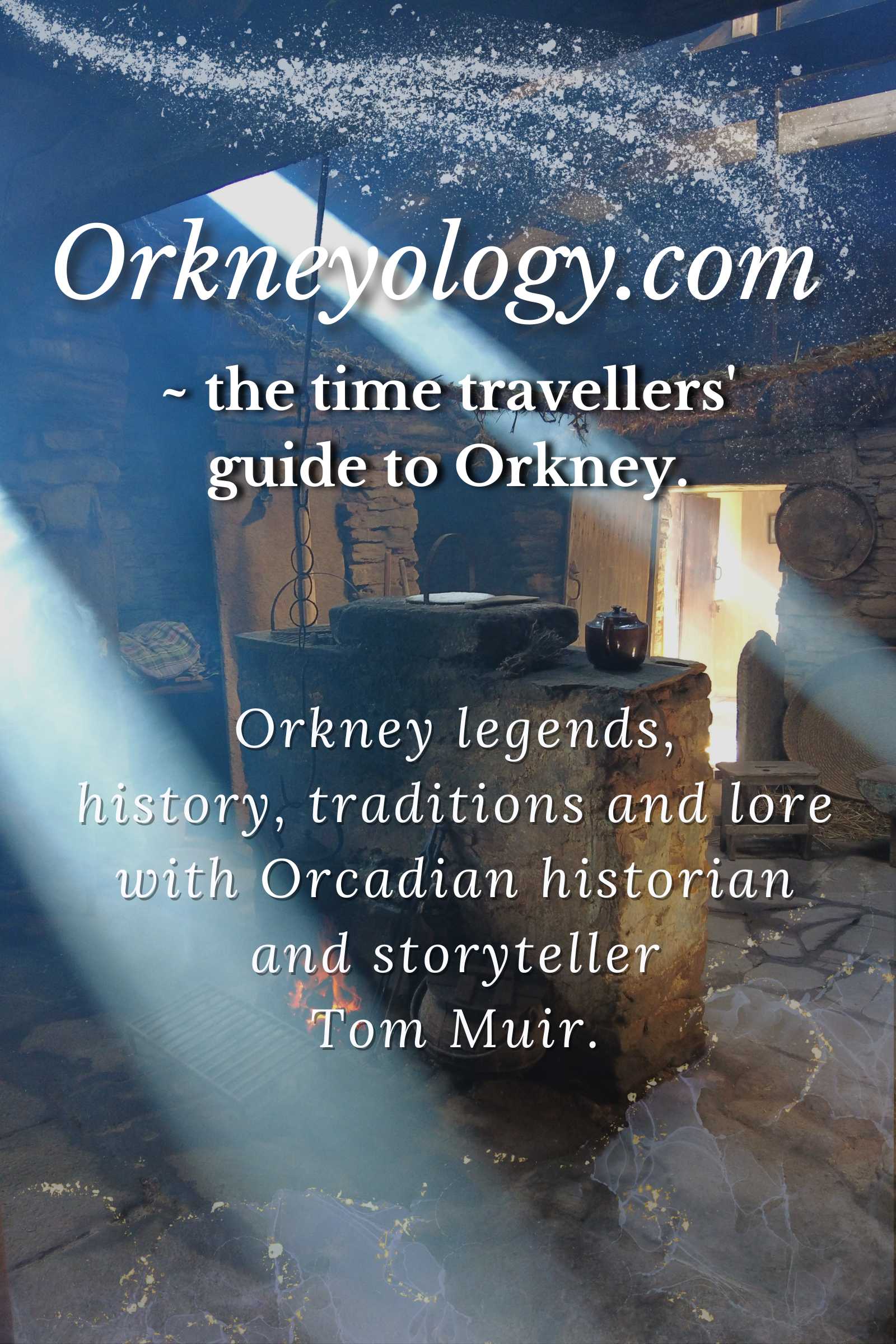Inganess Bay Memories
by Jim Muir, Valdigar
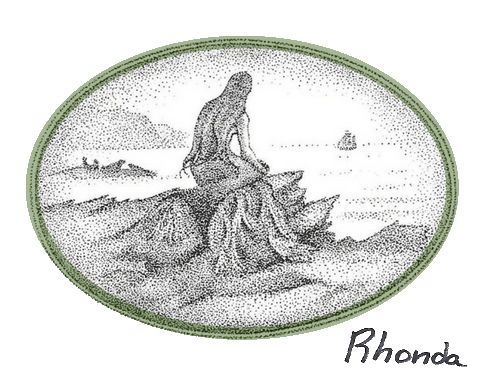
We are indebted to Tom's brother Jim for this warm and personal reminiscence of Inganess Bay in Orkney's East Mainland.
We are further indebted to community members (near and far) who generously loaned us the use of their images of the bay.
Thank you to each of you for sharing your memories and making this article a real community effort.
The farm in which we live is called Valdigar,
in the parish of Tankerness...
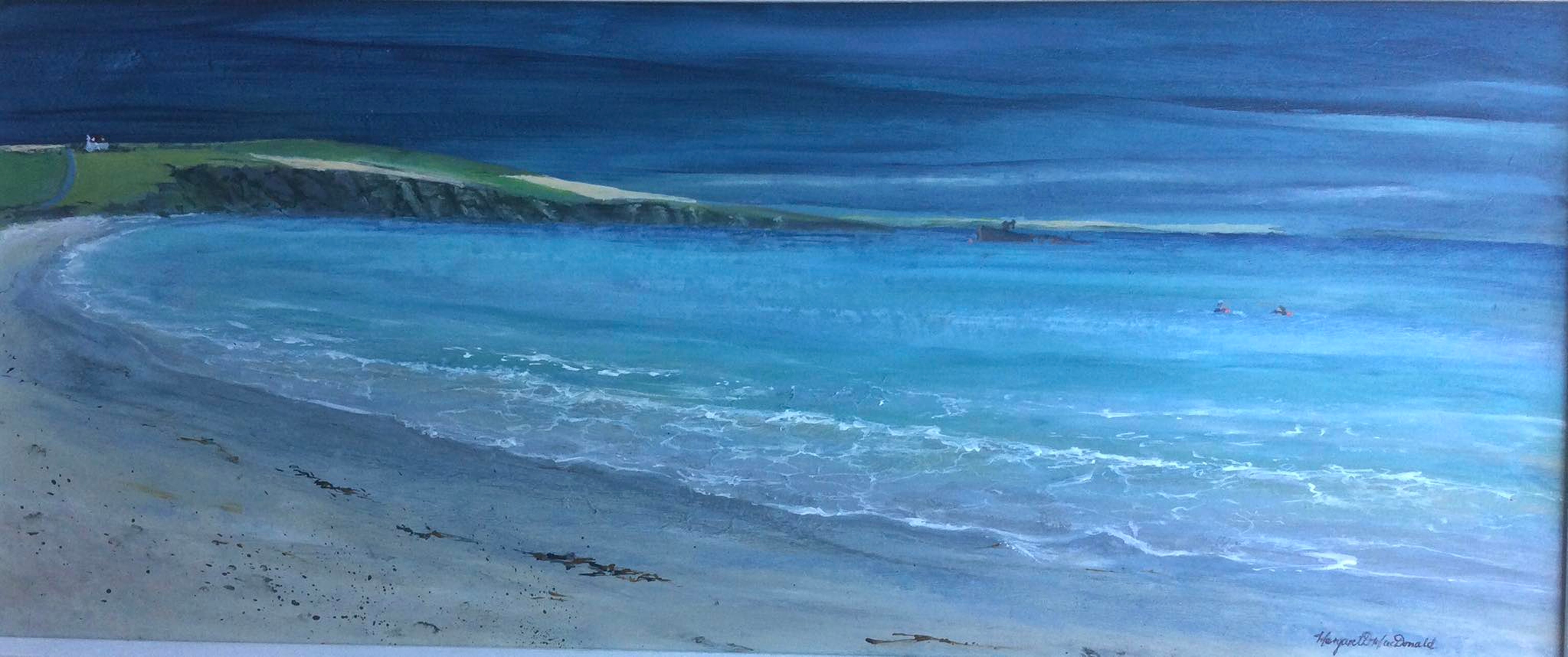 Painting by Margaret MacDonald ~ "Wild Swimming at Inganess"
Painting by Margaret MacDonald ~ "Wild Swimming at Inganess"The farm lies on the side of a hill above Inganess Bay, which separates the parishes of Tankerness and St Ola.
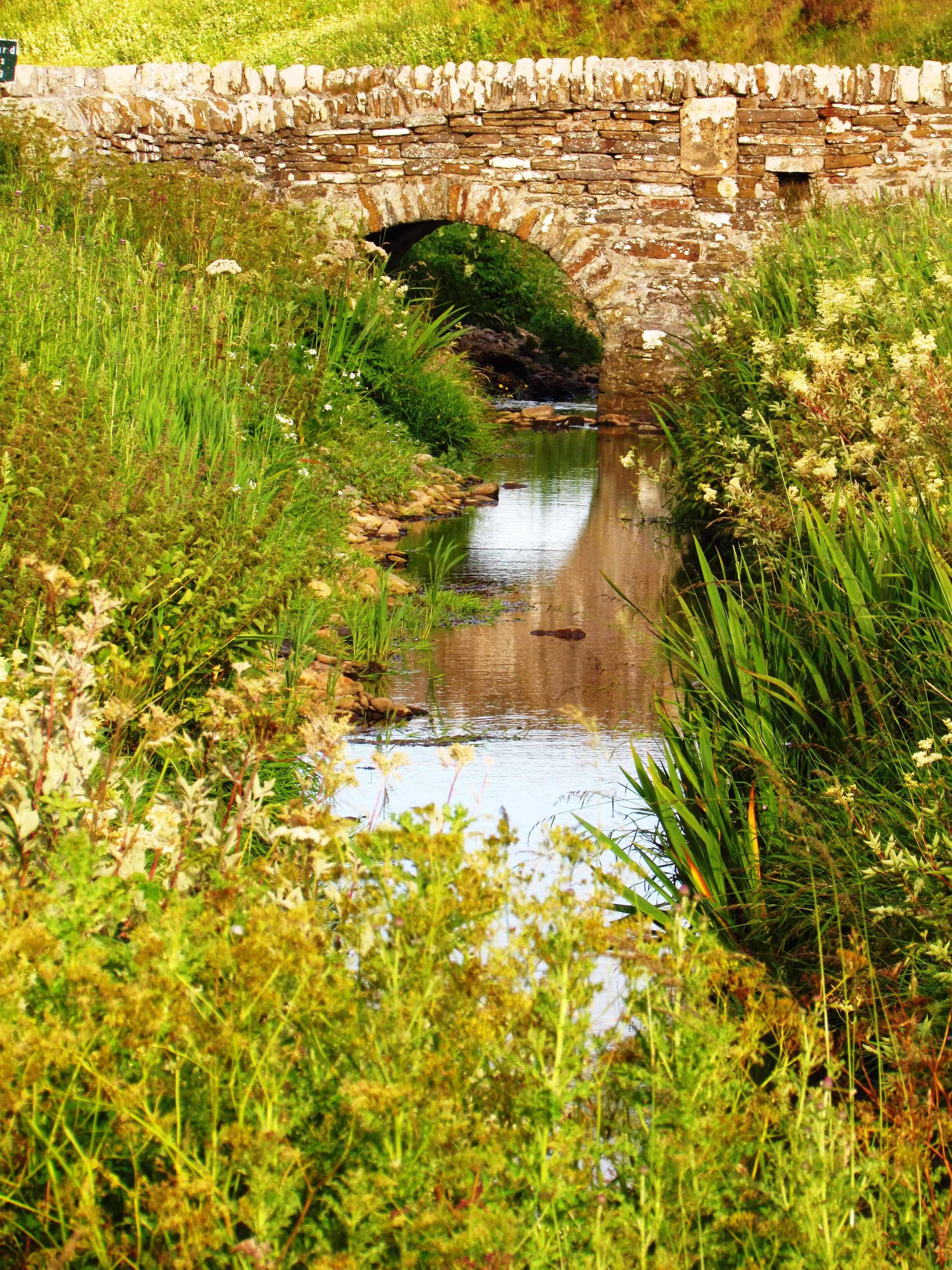 Photo courtesy of Sue Taylor
Photo courtesy of Sue TaylorThe bay has had an amazing history, most of which took place before I was born. However, some things happened in the years of WWII, just before I came along.
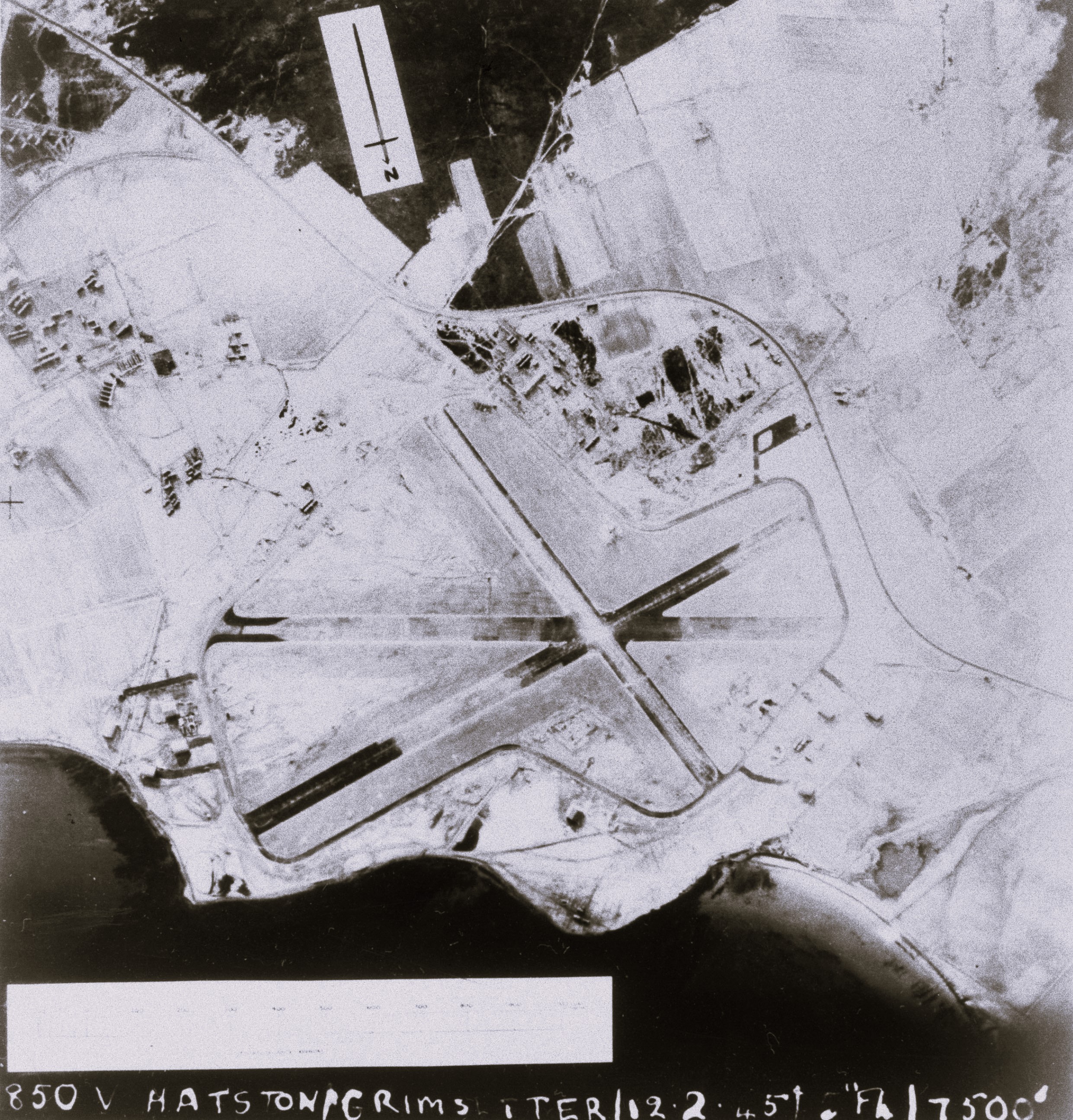 Grimsetter Aerodrome/Inganess Bay - courtesy of Orkney Library Archive L793-2
Grimsetter Aerodrome/Inganess Bay - courtesy of Orkney Library Archive L793-2In February 1940, the cargo ship SS Loch Maddy, carrying a cargo of wheat and timber, was traveling from Vancouver, British Columbia, to Leith when it was torpedoed close to the isle of Copinsay and broke into two parts.
The bow section sank rather quickly and four members of the crew were killed. However, the stern section stayed afloat and was taken in tow by a British rescue tug, and sank in Inganess Bay.
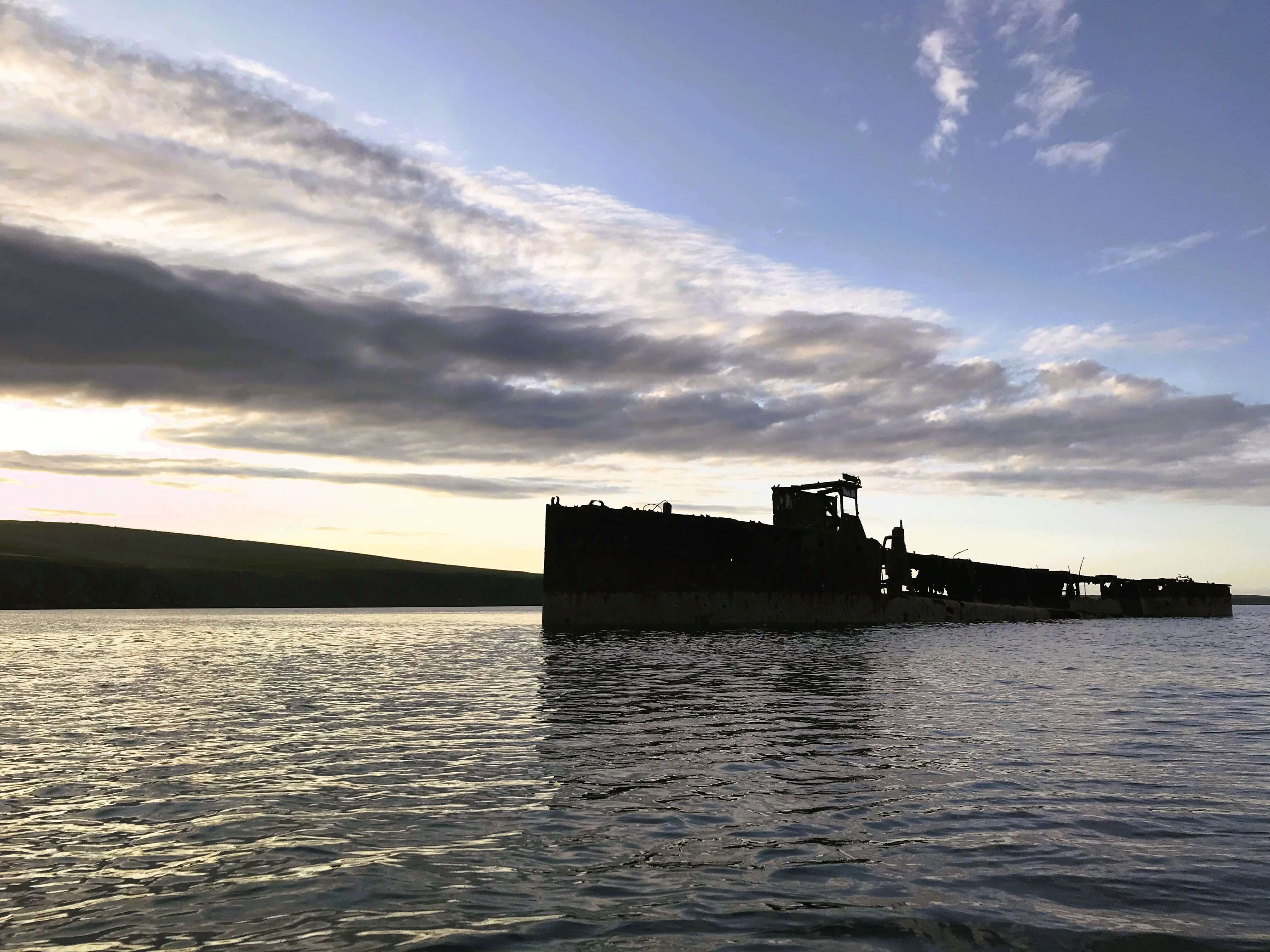 Photo courtesy of Craig Taylor
Photo courtesy of Craig TaylorThere was quite a large cargo of Oregon pine wood on board, and on a couple of occasions since then a quantity of wood has been salvaged.
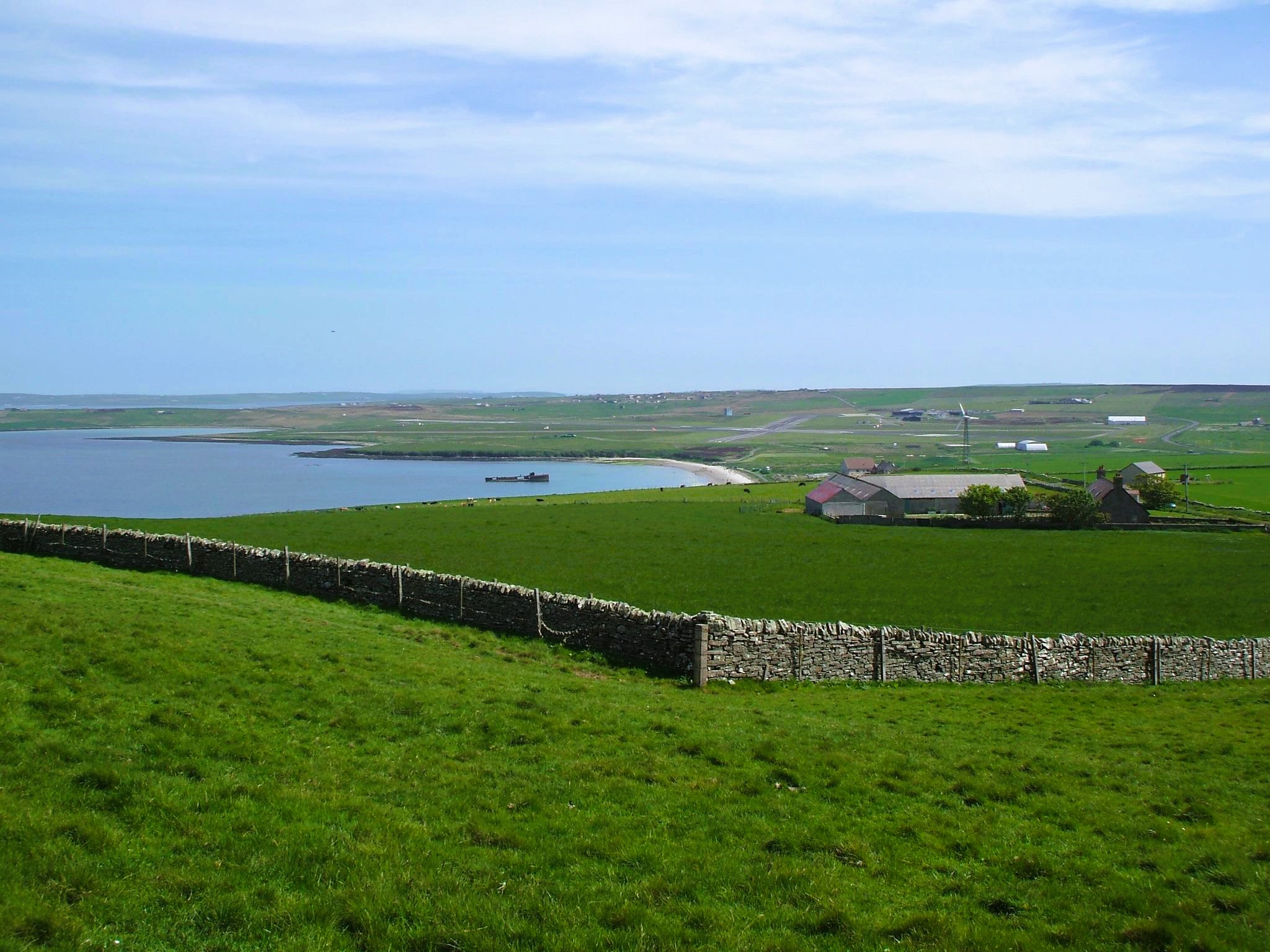 Photo courtesy of Norman Logie of Inganess
Photo courtesy of Norman Logie of InganessMany people who visit Inganess Beach on a sunny afternoon will be aware of the wreck of an old ship slightly out from the shore.
There is also an interesting story behind that.
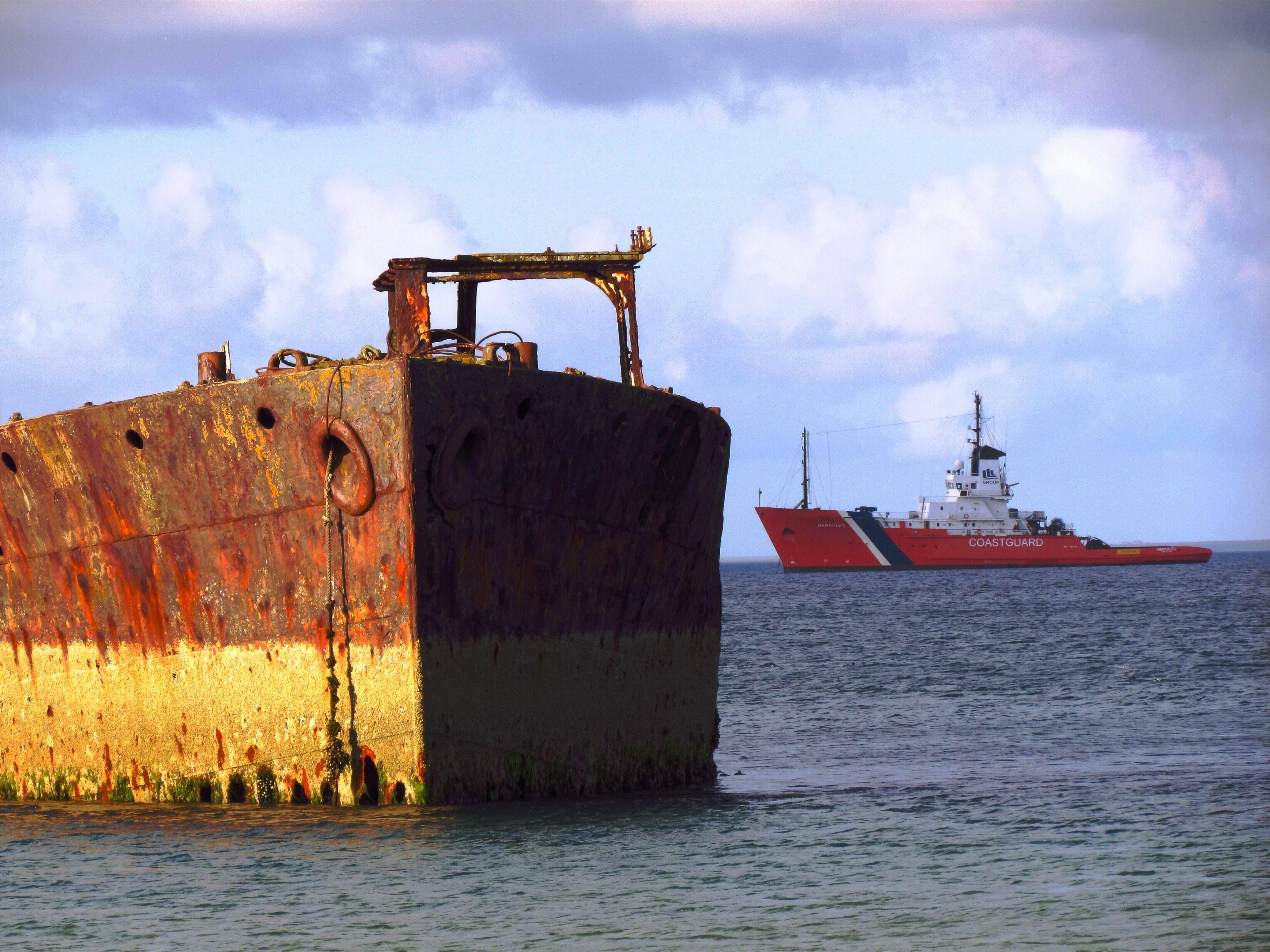 Photo courtesy of Sue Taylor
Photo courtesy of Sue TaylorThe ship was originally called Sprucol and was built and launched in 1917. It served in WWI, and on one occasion was damaged by a torpedo.
After the war, the Sprucol was sold out of service. It was bought by an oil company. It joined their fleet and was renamed Juniata.
Maybe they should have remembered that there is a superstition among sailors that renamed ships are unlucky!
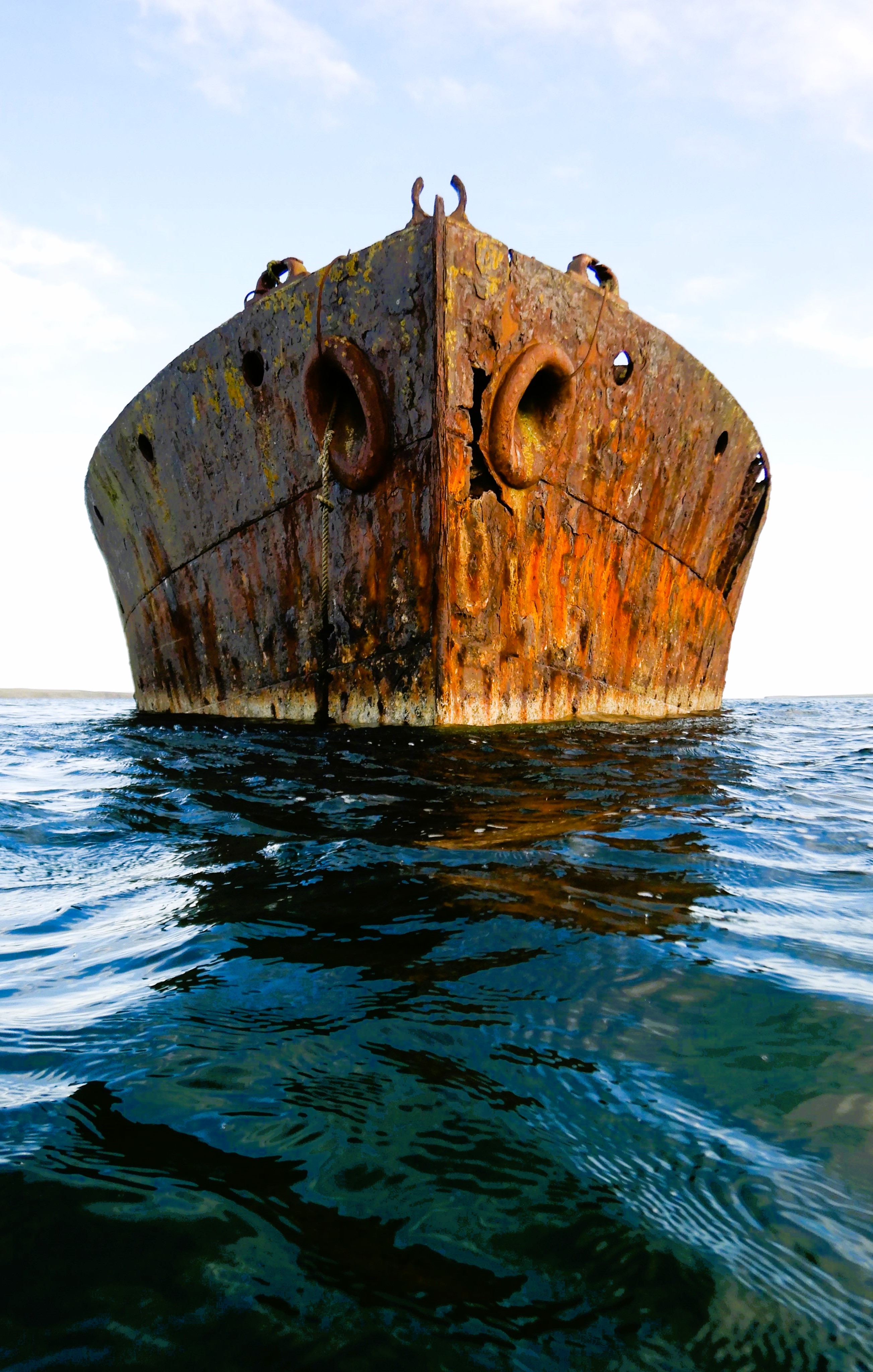 Photo courtesy of Siobhan Miller
Photo courtesy of Siobhan MillerJuniata worked for the oil fleet and did a good job for twenty years, but at the start of WWII, it was bought by the Royal Navy.
Due to the tragic sinking of the Royal Oak in Scapa Flow, she was one of the blockships that were sunk (in her case, in Water Sound) to deter submarines from entering Scapa Flow.
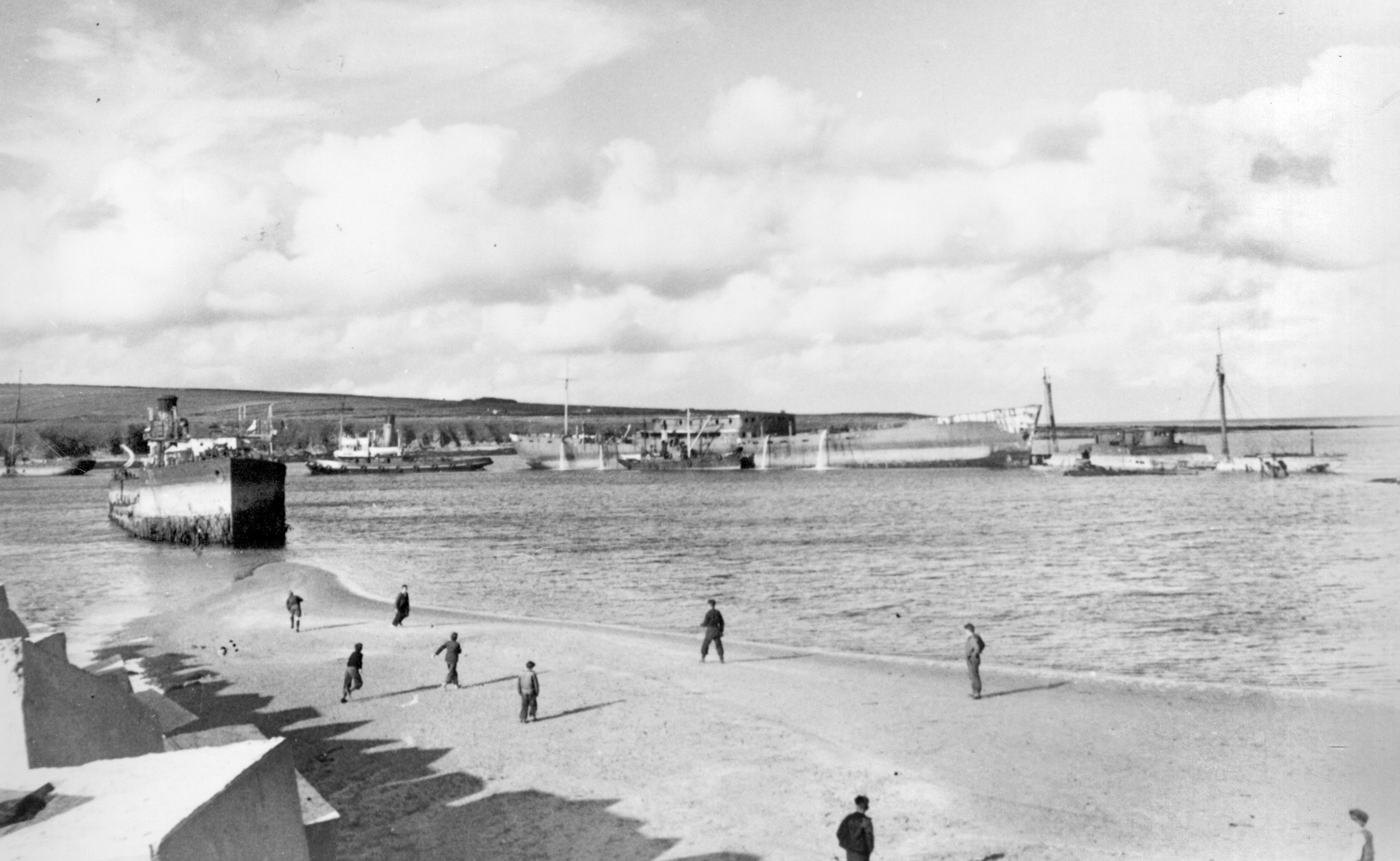 Juniata beached in Water Sound, Barrier 4, 1948
Juniata beached in Water Sound, Barrier 4, 1948In 1949, the Juniata was refloated. However, by this time it was too fragile to be towed very far, so she was taken to Inganess Bay and left on the beach.
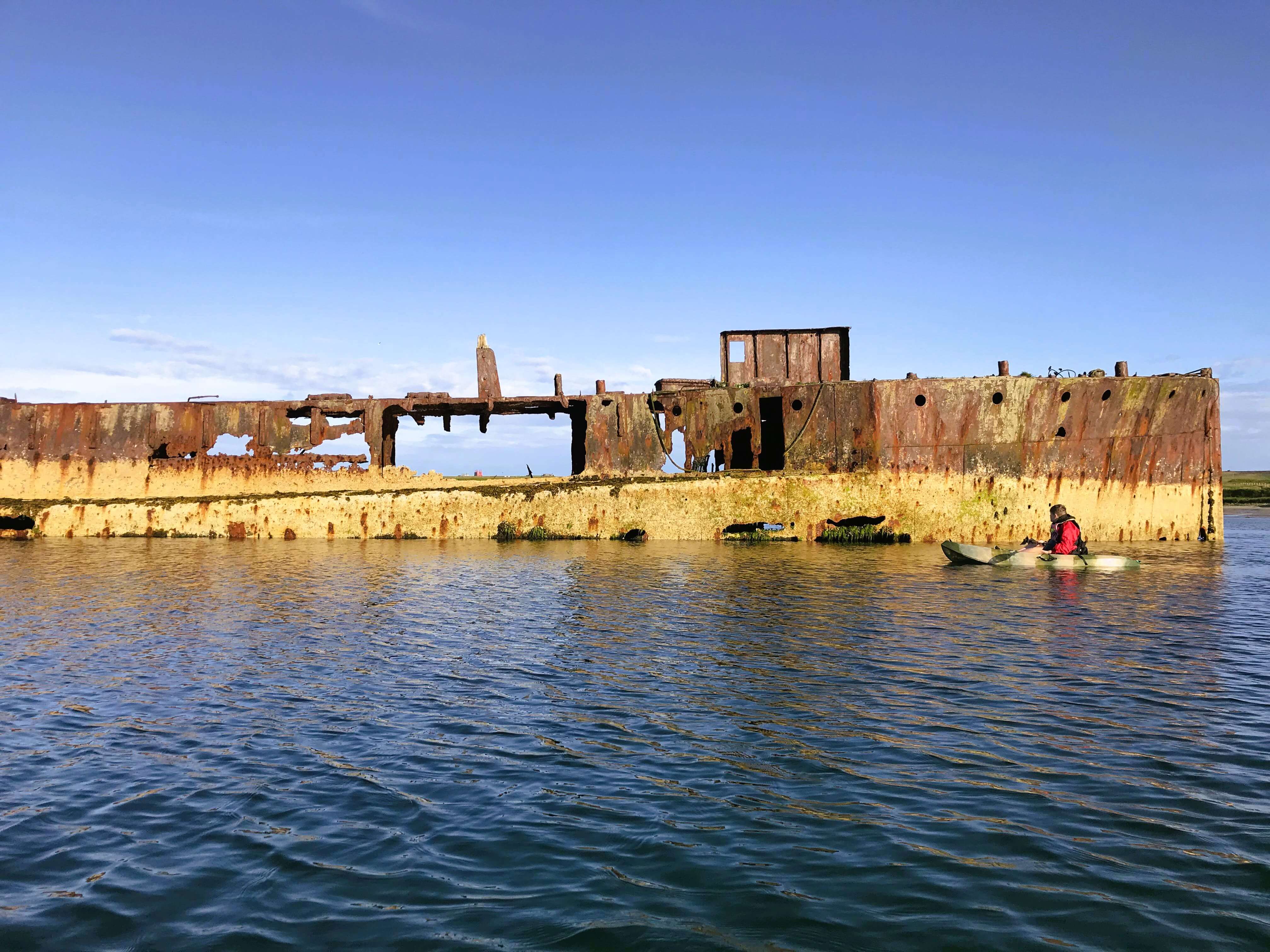 Photo courtesy of Craig Taylor
Photo courtesy of Craig TaylorThe original intention was to have her broken up for scrap, but it never happened. She was left there to get more and more rusty as the years went by.
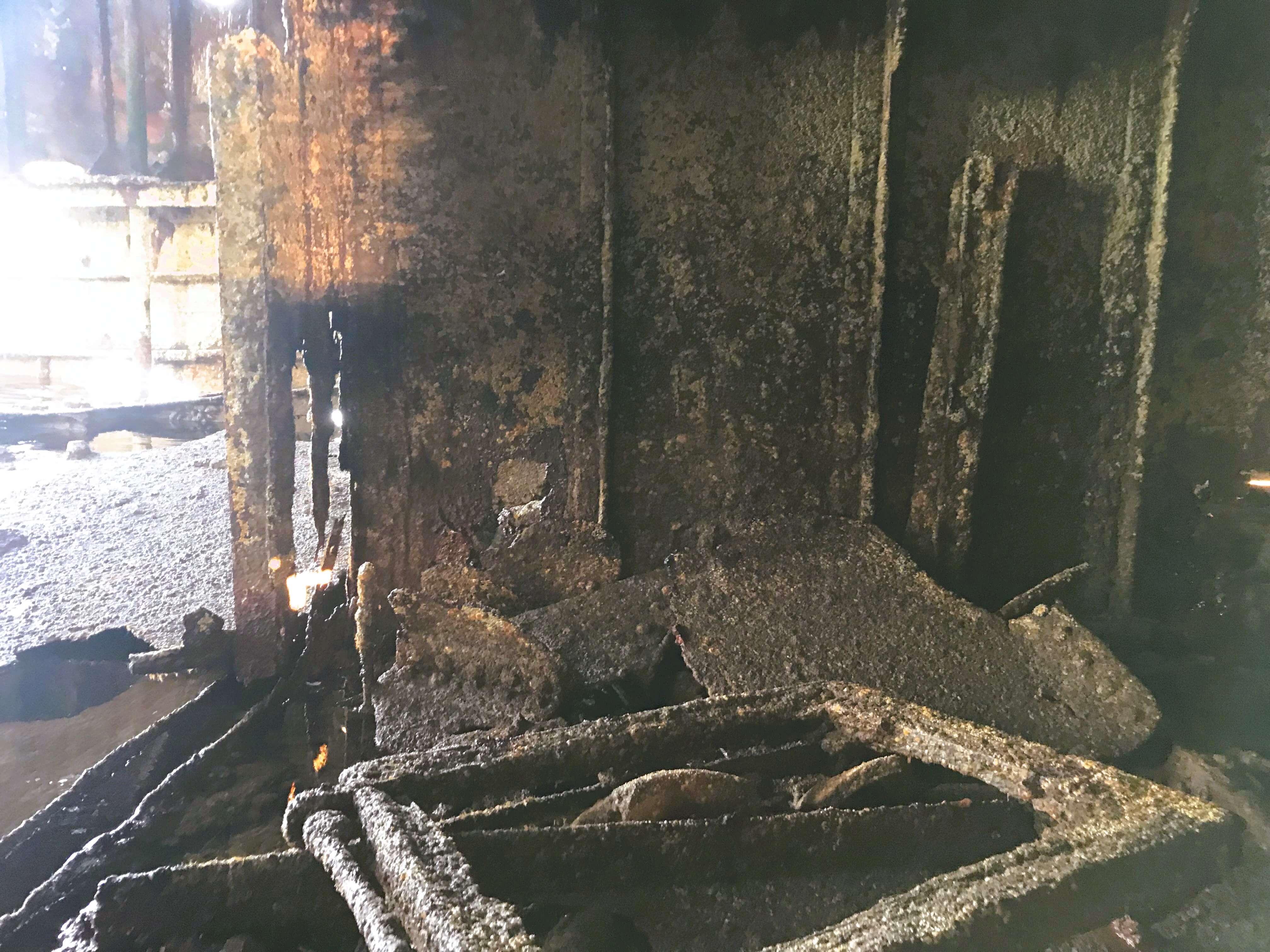 Photo courtesy of Craig Taylor
Photo courtesy of Craig TaylorI must have been about four years old when it was towed in and left in Inganess Bay. I remember great excitement with my parents about some unusual event taking place on the sea.
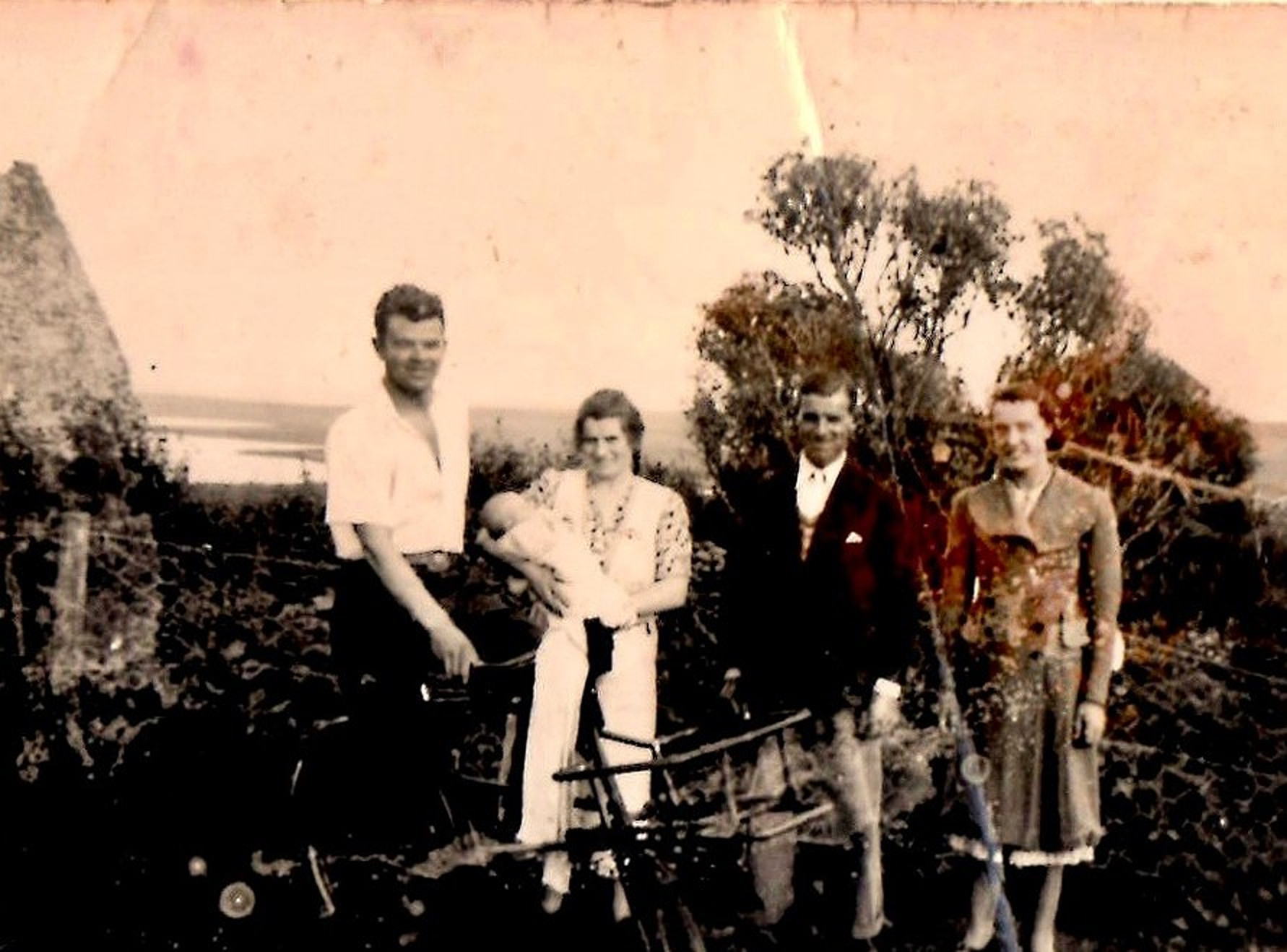 Photo courtesy of Norman Logie of Inganess
Photo courtesy of Norman Logie of InganessA few years later when I was at primary school, I was taken on walks to the seashore by my father's aunt, Eliza McLeod.
The first thing that caught my eye was an old milestone at the side of the road just above the shore. I have no idea how long that has been there, but it shows the distance to the Post Offices of Tankerness and Kirkwall.
When we got to the beach, there was a lot of interest in driftwood and objects washed ashore from passing ships. Of course, that was long before the "Bag the Bruck" campaigns to remove rubbish from Orkney beaches.
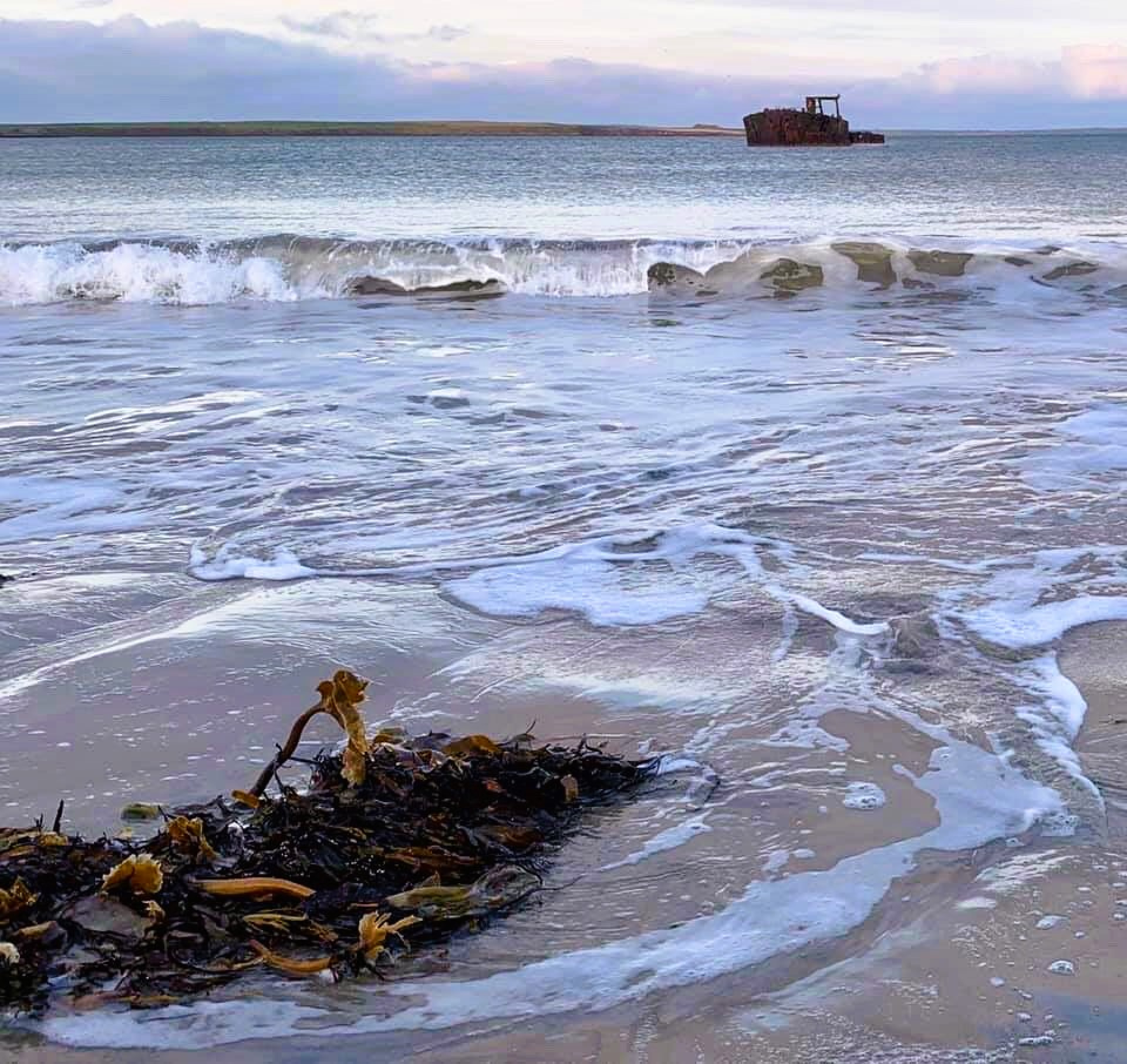 Photo courtesy of Margaret MacDonald
Photo courtesy of Margaret MacDonaldThe most interesting part for me were rock pools, which could contain all kinds of interesting things. On one occasion, we found a hermit crab with a shell on its back, and we took it back to the house. (Something I would never do now!)
Mother was very keen for me to take it to the school the following day. I did not want to do that because, at best, I would be drawing attention to myself, and at worst, I would be laughed at!
However, I was talked into it, and it caused a lot of interest, especially with my first teacher. Mrs Firth was a good and nice teacher, especially compared to some of the ones that came later.
When I came home, we put it back to the rock pool again.
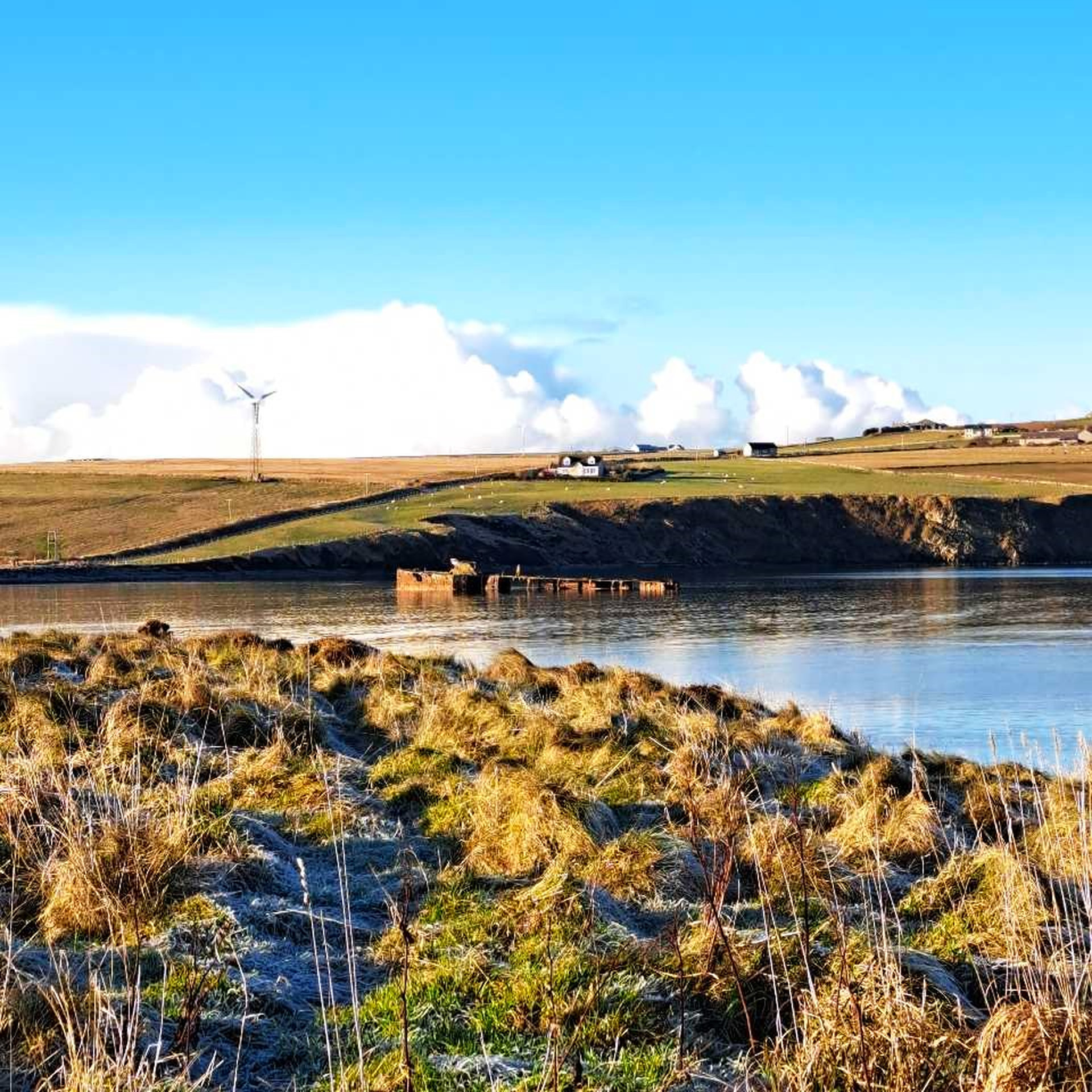 Photo courtesy of Susan Taylor
Photo courtesy of Susan TaylorWhen my brothers and I were schoolboys, the Logie family lived in the farm of Inganess on the opposite side of the bay from us.
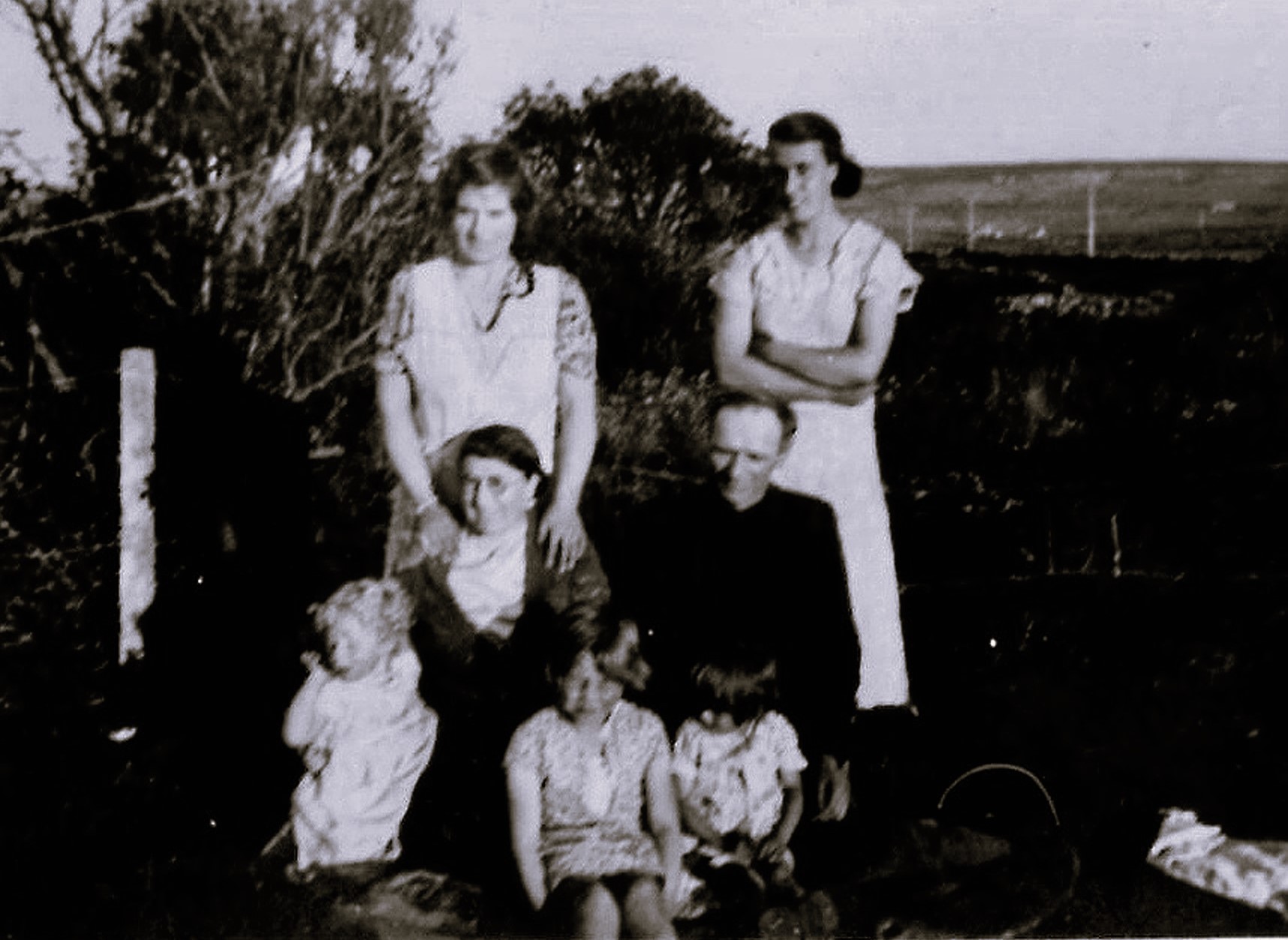 The Logie family, courtesy of Norman Logie of Inganess
The Logie family, courtesy of Norman Logie of InganessThe mother of the family, Violet Logie, was a first cousin of my mother and was married to George Logie.
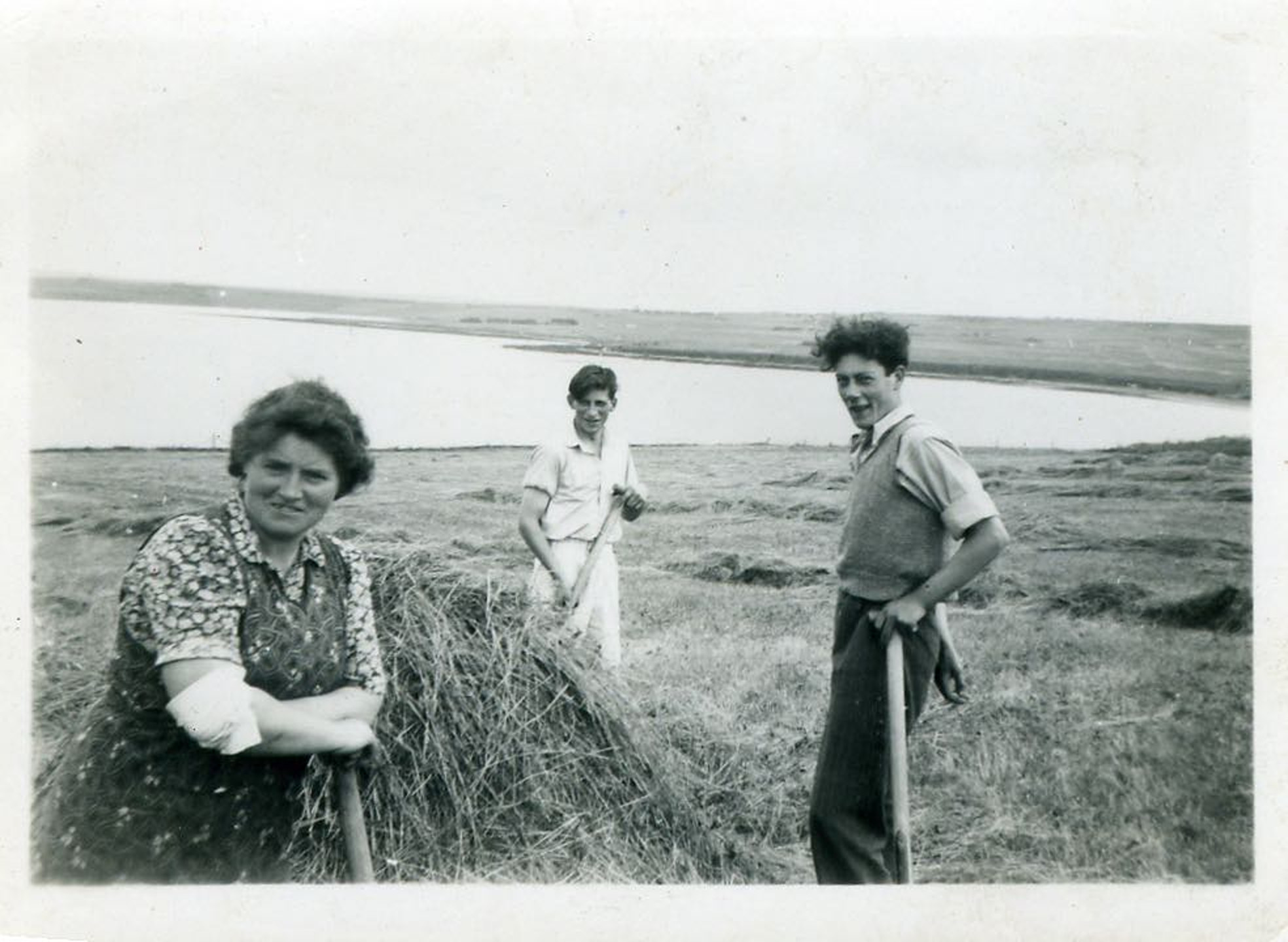 Photo courtesy of Norman Logie of Inganess
Photo courtesy of Norman Logie of InganessThe young ones sometimes went out to sea in a rowing boat. Some of them rowed, and others tried to catch fish.
I don't know what my mother would have said if we had suggested that!
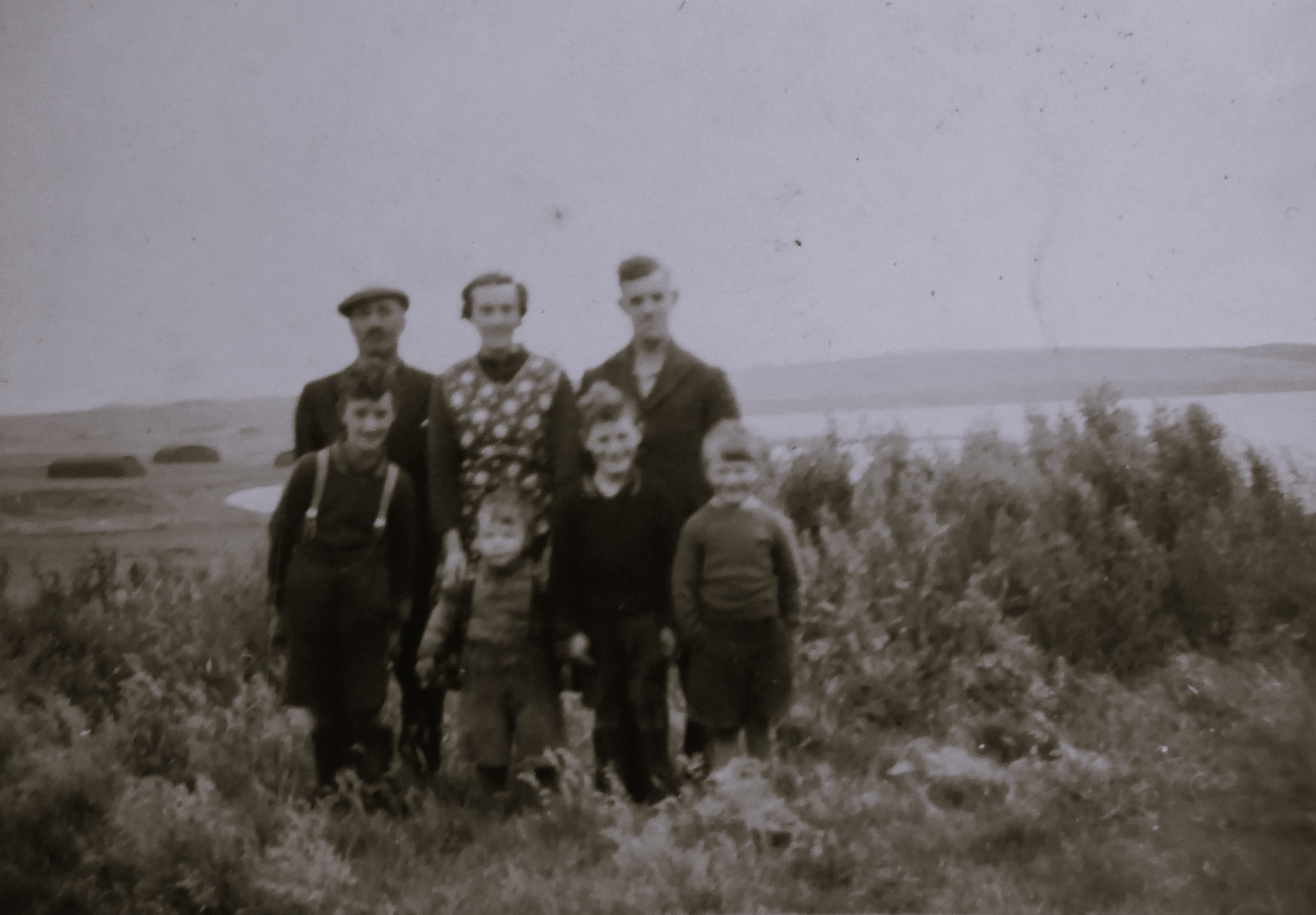 The Muir family
The Muir familyIn my younger days, there was a wall along the shore below our house called "the white dyke". (Dyke is an old word meaning a stone wall.)
When we went down to the shore as schoolboys, I remember a set of stone steps that we used to go down from the road to the beach.
These steps have long gone, along with most of the wall, due to severe gales and high tides in the winter.
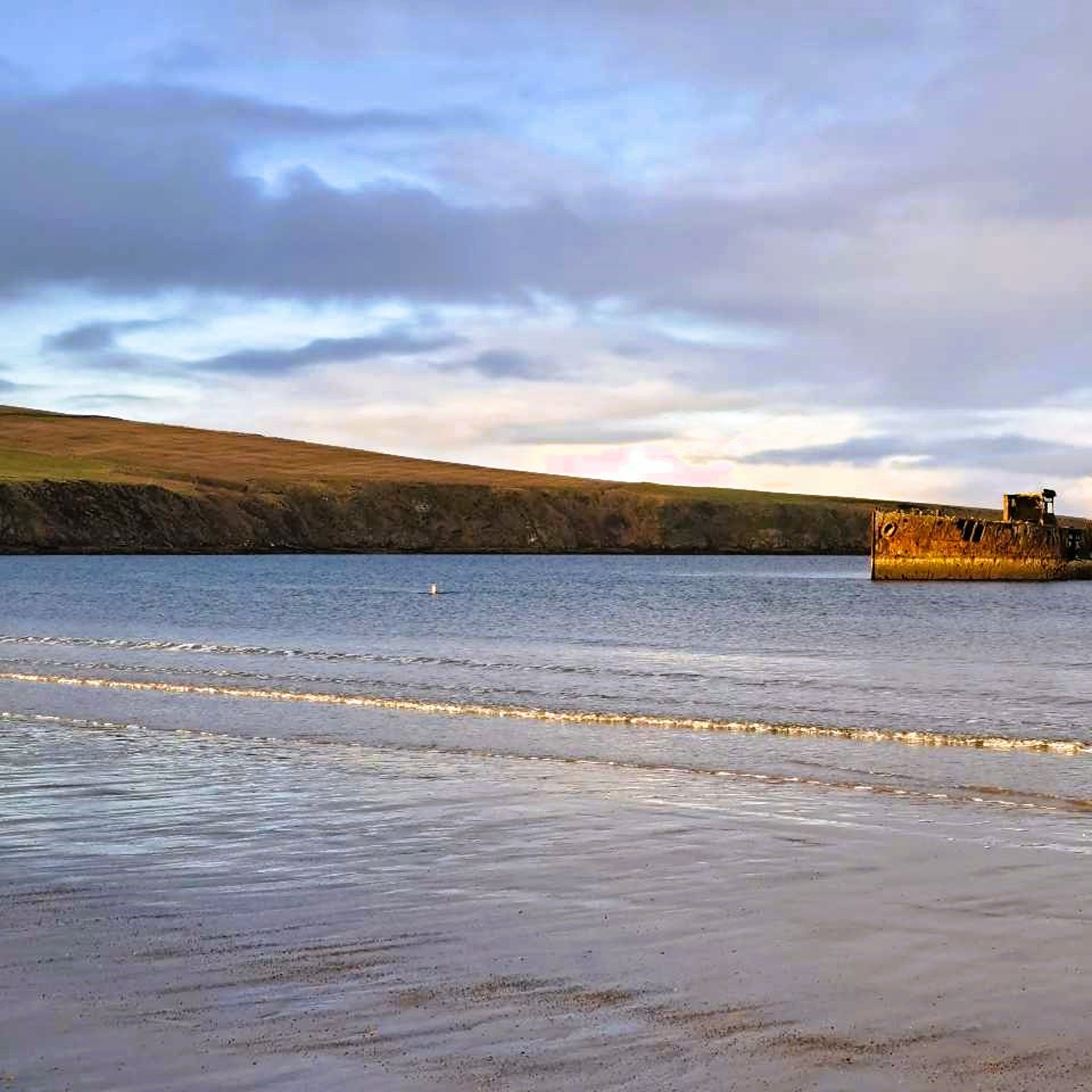 Photo courtesy of Susan Taylor
Photo courtesy of Susan TaylorAt certain times of the year, in conjunction with the new and full moon, we get extremely low tides, when people come to the shore to catch cockles and razor fish, better known as "spoots".
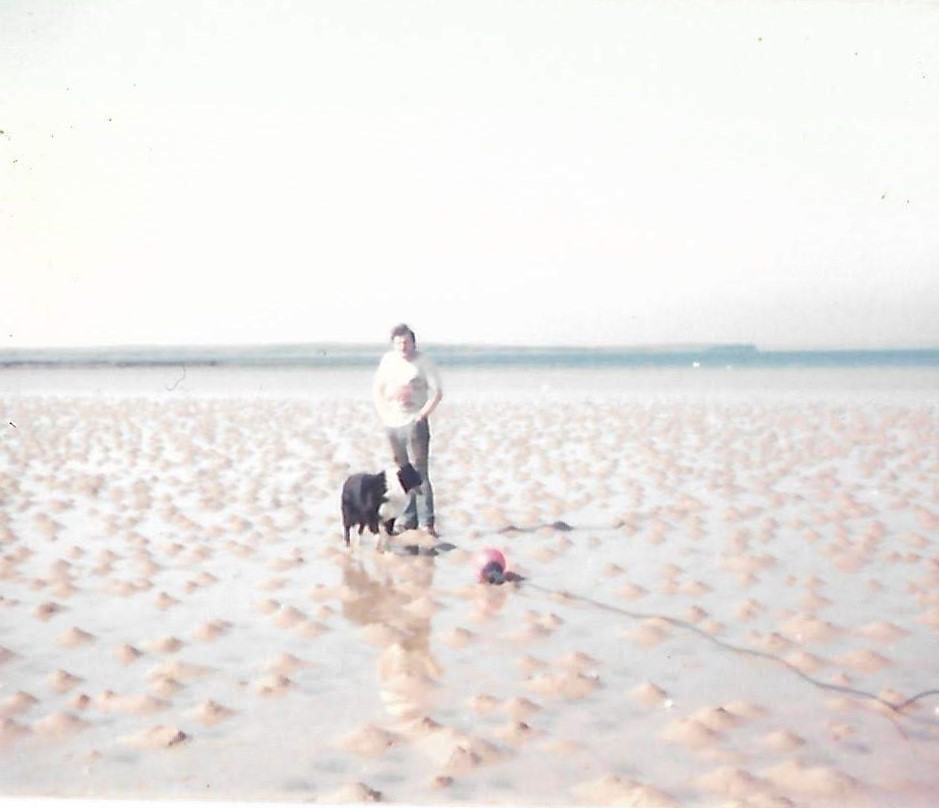 Tom on the beach at low tide
Tom on the beach at low tide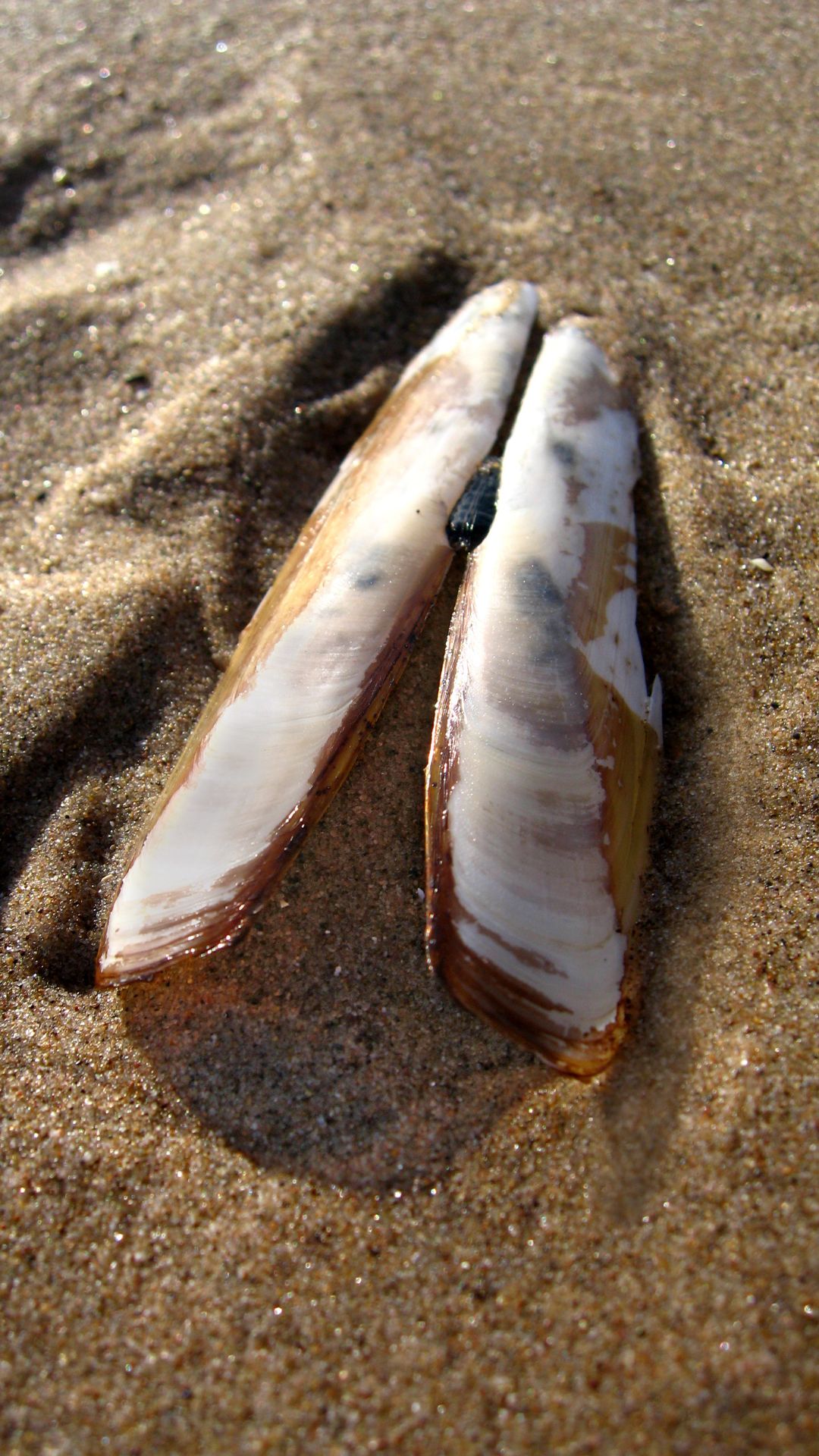 spoots
spootsWhen we were young, I went with my brothers, Cecil and John, to catch spoots.
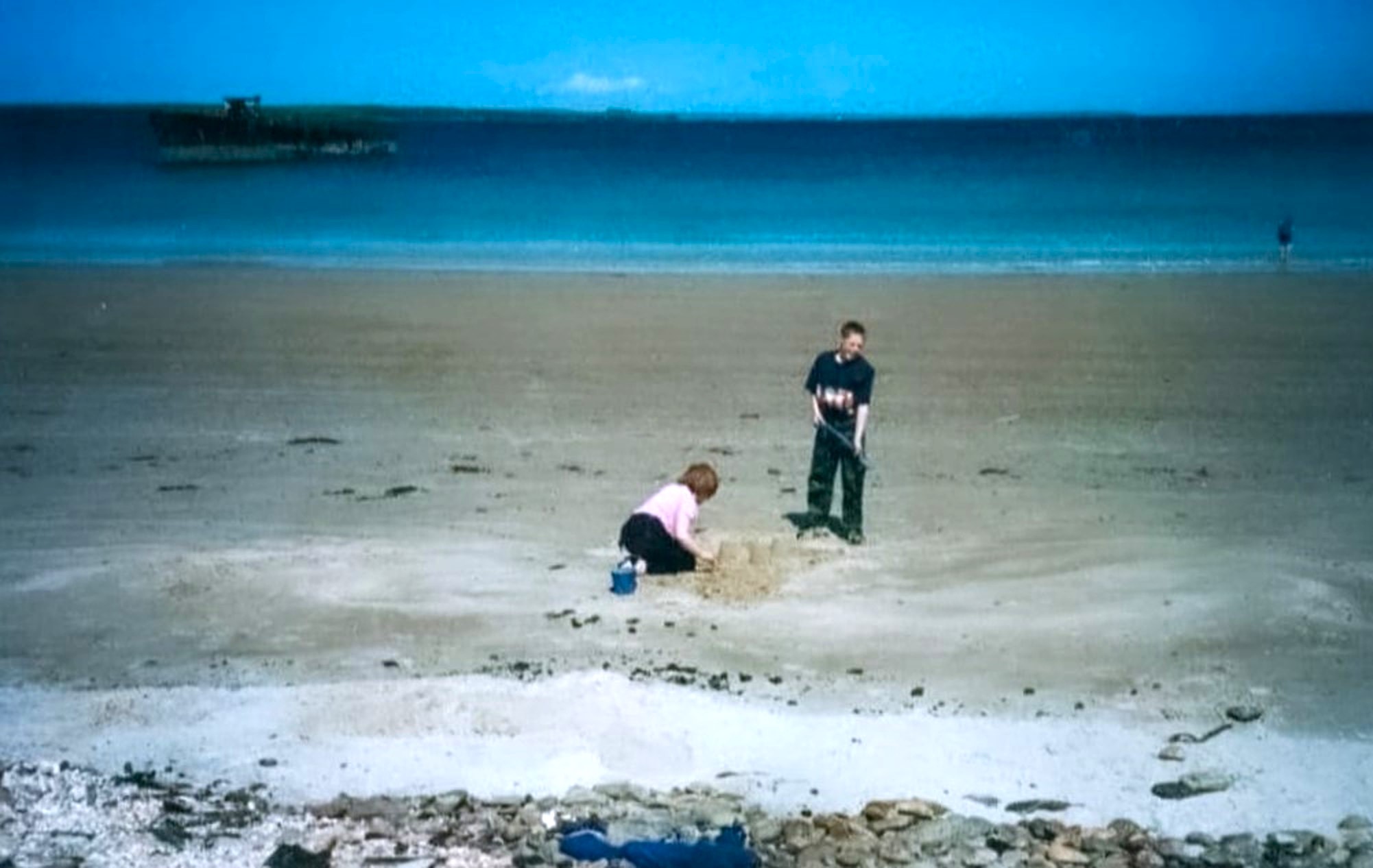 The next generation of Muirs at Inganess, courtesy of Josie Muir
The next generation of Muirs at Inganess, courtesy of Josie MuirI remember one occasion in particular, when a TV crew were on the sand with us, filming different spoot catchers for a local news programme.
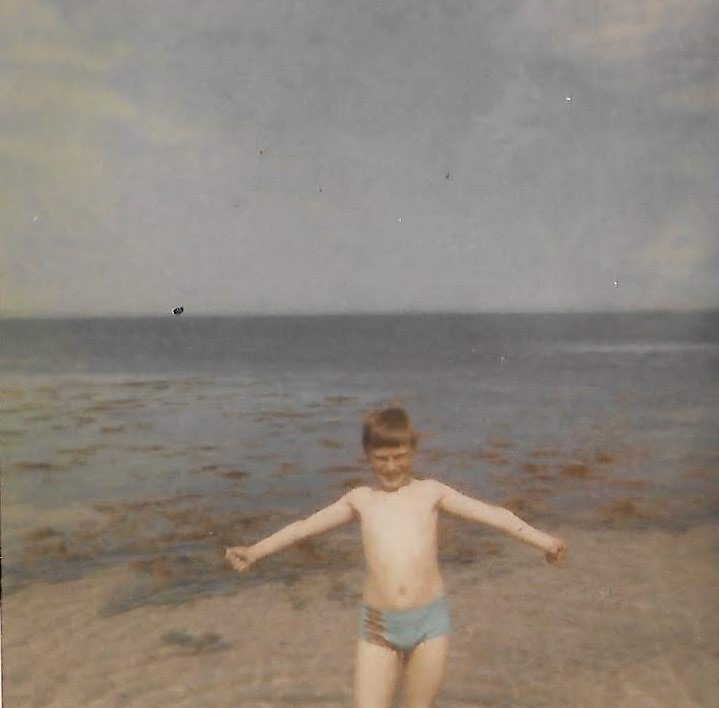 Young Tom enjoying the bay
Young Tom enjoying the bayEventually, it was our turn, and we were filmed for a short while. This was later shown on a local news programme called "Talk of the North," which was shown in the north of Scotland.
The sad irony was that on the night it was shown, I was outside working and I missed it!
I used to go for walks around the Inganess Bay coast, and I sometimes have shorter walks now. Two walks still have a special place in my heart.
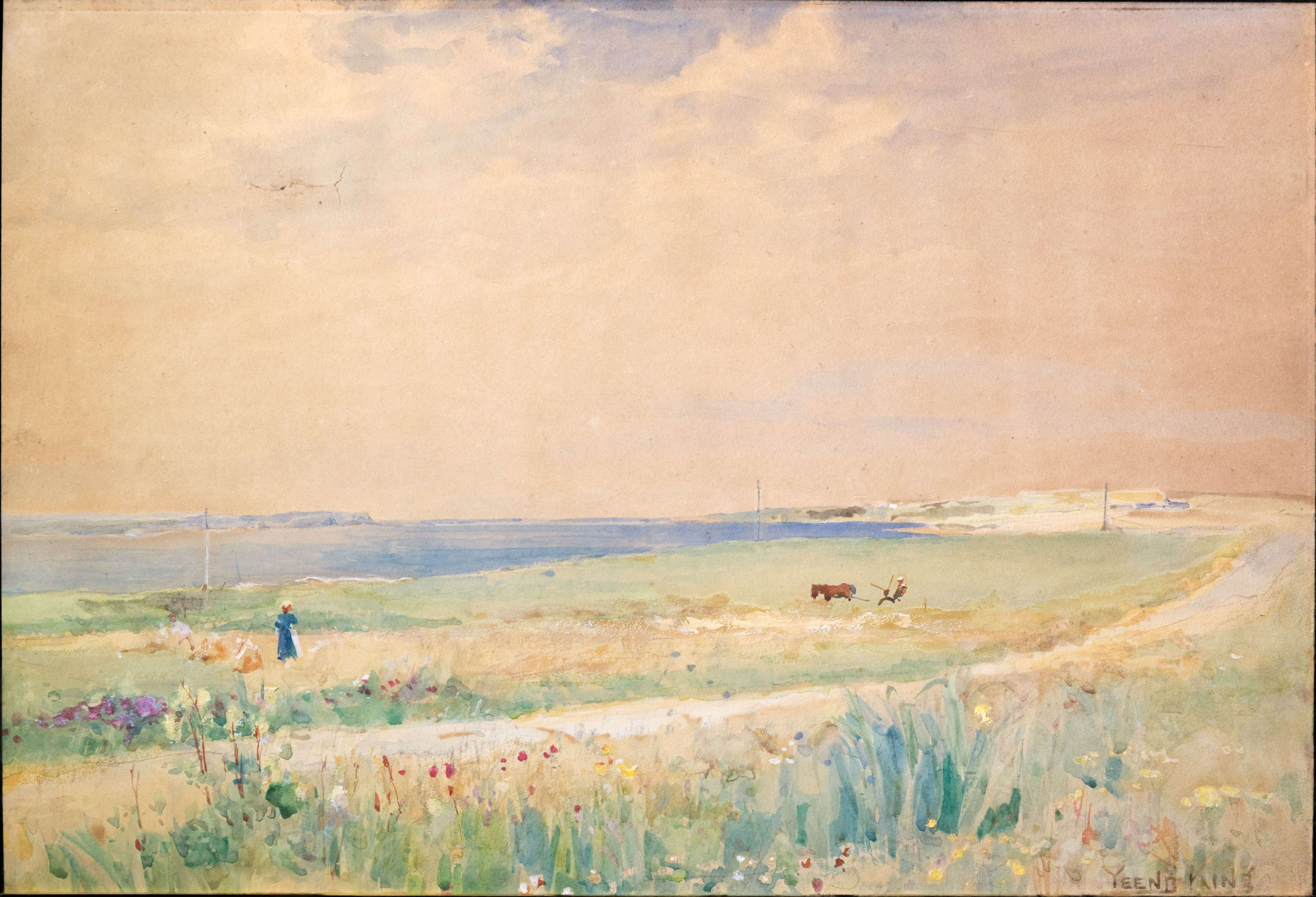
Painting by Henry John Yeend King: ‘Tankerness Old Road and Weethick’ , c.1912. It shows agricultural work going on by the old Tankerness-Kirkwall road, looking north towards Weethick. This farm is now a part of Kirkwall Airport. The Orkney Museum also looks after two other Orkney paintings by this artist. Image courtesy of the Orkney Museum. This painting is on display on the stairs to the upper floor.
In 2003, our family went for a walk round the beach with Gillian Molony from New Zealand, who is a descendant of the Baikies of the Hall of Tankerness. She is now a dear friend.
The second occasion was in 2016 when my brother Tom and his wife Rhonda went with us, and Rhonda's eldest daughter, Sarah. That was also very special.
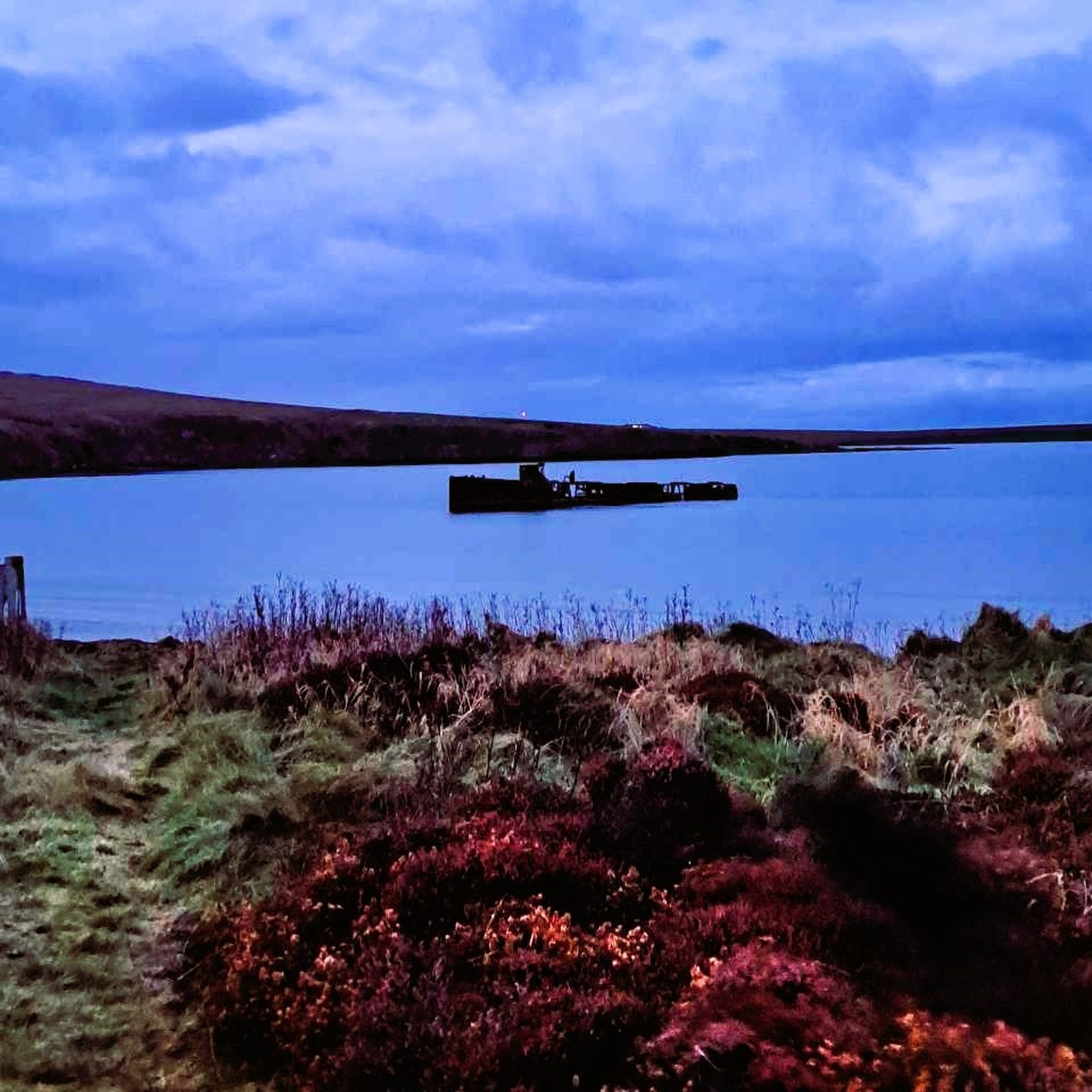 Photo courtesy of Susan Taylor
Photo courtesy of Susan TaylorI have already mentioned that the white dyke was almost destroyed by gales and high tides. During the same period of time, other parts of the coastline have been affected.
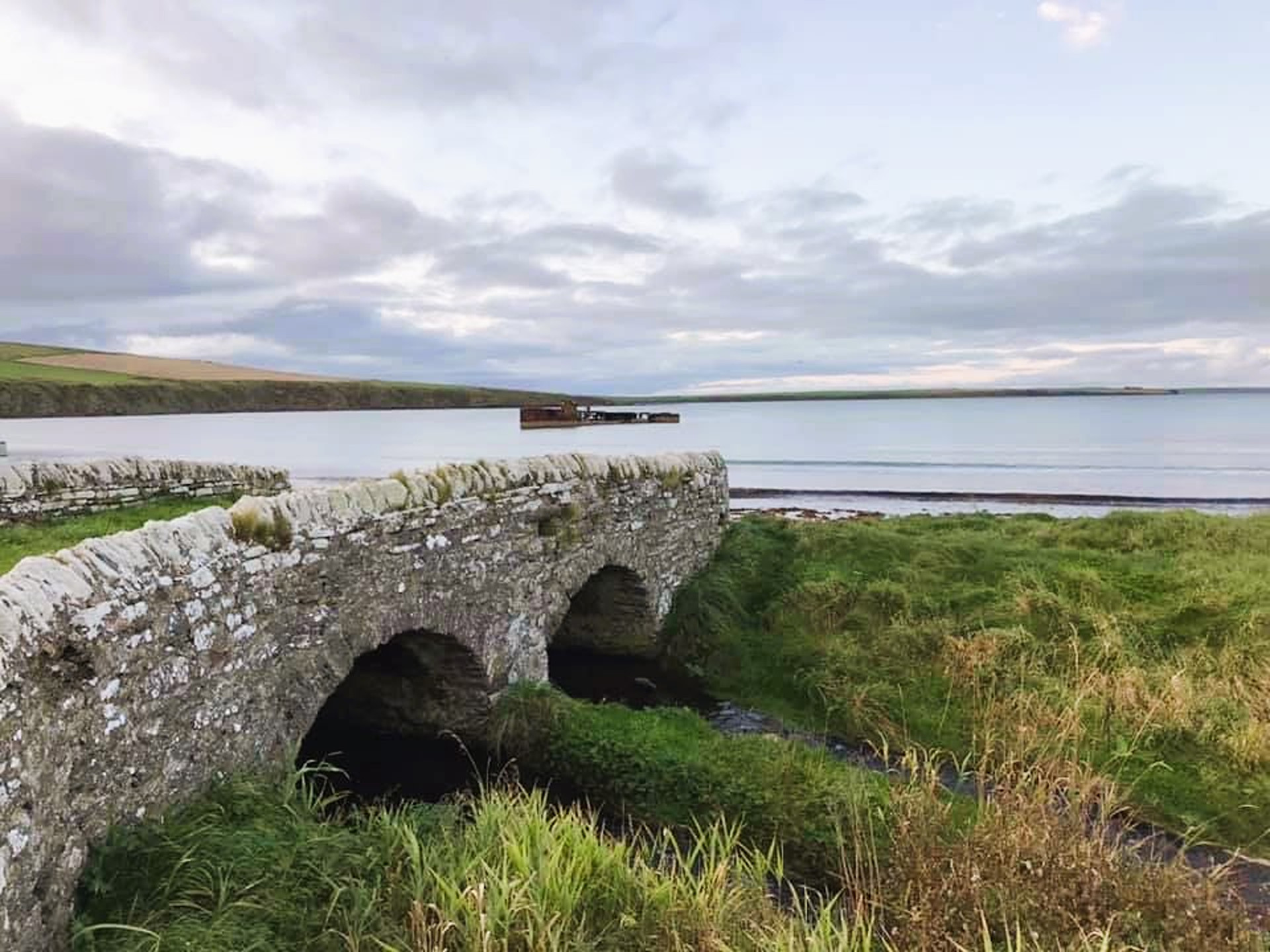 Photo courtesy of Margaret MacDonald
Photo courtesy of Margaret MacDonaldWhether coastal erosion is due to climate change or another reason, I don't know. But it is my wish that long after I am gone, there will still be aspects of Inganess Bay for future generations to enjoy as much as we did.
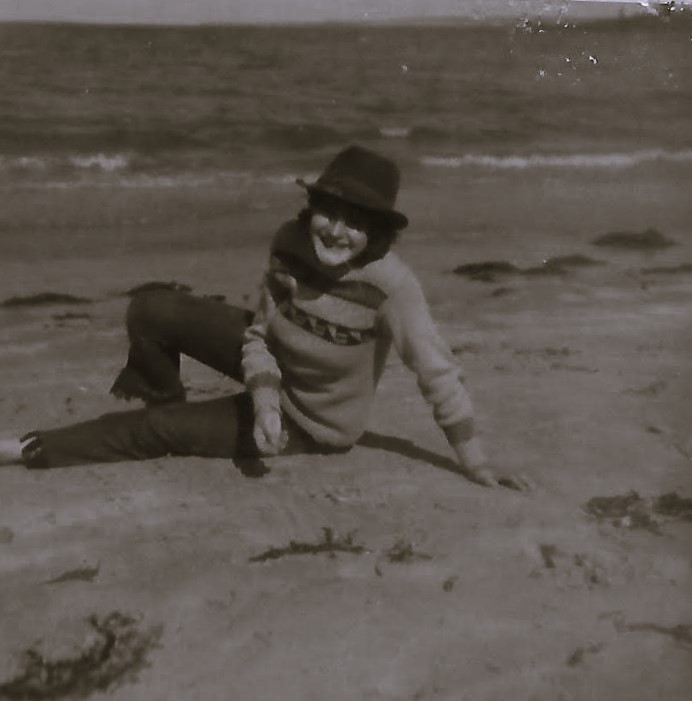 Liz Muir
Liz MuirDo you have Inganess Bay memories to share?
Do you have more to add to the story? Share it here!
What Other Visitors Have Said
Click below to see contributions from other visitors to this page.
Further Inganess Memories - from the Other Side of the Bay 




Further to the interesting article about Inganess Bay by my cousin, Jim Muir, being a few years older and from the other side of The Bay, a few memories …

Mermaid image (Rhonda's pages) and storyteller image (Tom's pages), and all other illustrations except where noted are here by the courtesy of our dear friend - Stromness author, artist and historian, Bryce Wilson MBE, who owns all copyrights. Thanks, Bryce!

